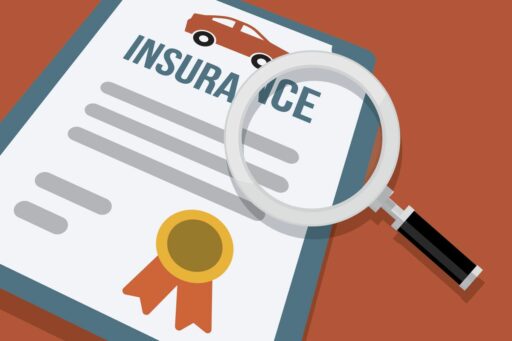When it comes to protecting your property, the roof is a fundamental component that demands careful consideration. Duro-Last roofing systems have emerged as a reliable option for both residential and commercial buildings, offering durability and ease of maintenance. This article will guide you through the various aspects of choosing Duro-Last roofing contractors, managing roof damage insurance claims, and addressing specific residential and commercial roofing considerations, including the integration of solar systems and preparation for extreme weather conditions.
Key Takeaways
- Duro-Last roofing systems provide a durable and low-maintenance solution suitable for various building types.
- Navigating insurance claims for roof damage requires understanding the claims process and selecting a trustworthy contractor for insurance work.
- Homeowners must evaluate the need for roof repairs versus replacement, and consider the integration of solar systems with their roofing choices.
- Commercial entities should assess their roofing needs and consider options like Built-Up Roofing Systems (BUR) for their durability and cost-effectiveness.
- Preparing for extreme weather involves weatherproofing roofs for the rainy season, ensuring hurricane preparedness, and knowing how to handle emergency repairs.
Understanding Duro-Last Roofing Systems

The Benefits of Duro-Last Roofing
Duro-Last Roofing systems offer a multitude of advantages for both commercial and residential properties. Durability and longevity are at the forefront, with Duro-Last roofs known for their resistance to harsh weather conditions and their ability to withstand the test of time.
When it comes to installation, Duro-Last’s prefabricated roofing systems ensure a quick and efficient process, minimizing disruptions to daily operations. This is particularly beneficial for businesses that cannot afford extended downtimes. Moreover, the lightweight nature of the material contributes to easier handling and reduced labor costs.
Energy efficiency is another significant benefit. Duro-Last’s reflective roofing membranes contribute to lower cooling costs, making them an eco-friendly option. Additionally, there is a current tax incentive for commercial properties investing in new, energy-efficient roofing systems.
Maintenance requirements for Duro-Last roofs are relatively low, which translates into cost savings over the roof’s lifespan. Regular inspections and timely repairs can further extend the durability of the roof, ensuring a reliable cover over your head for years to come.
Installation Process and What to Expect
When opting for a Duro-Last roofing system, understanding the installation process is crucial for homeowners and business owners alike. The installation process for Duro-Last roofing demands expertise and precision, ensuring a reliable and long-lasting cover over your head. The process typically involves the following steps:
- Initial roof inspection and measurements
- Custom-fabrication of the roofing materials
- Delivery of the prefabricated roofing system to the site
- Installation of the roof by certified contractors
- Final inspection and quality assurance checks
It’s important to note that Duro-Last roofs are prefabricated to fit each building’s specific dimensions, which significantly reduces on-site labor and potential for errors. This approach also allows for a quicker and cleaner installation process.
During installation, safety and minimal disruption to your daily activities are prioritized. The contractors will work efficiently to ensure that your home or business is not negatively impacted for an extended period.
Choosing a contractor with a proven track record and expertise in Duro-Last installations is essential. Look for contractors who are recognized by Duro-Last for their quality of work, such as Veterans National Property Services, to ensure that your roofing system is installed correctly and to the highest standards.
Maintenance and Longevity of Duro-Last Roofs
Duro-Last roofing systems are renowned for their durability and ease of maintenance, which contribute significantly to their longevity. Regular inspections and maintenance are key to ensuring that your Duro-Last roof remains in optimal condition for many years.
- Annual Inspections: It’s recommended to have your roof inspected at least once a year to identify any potential issues early on.
- Cleaning: Keep the roof free from debris and clean the surface as needed to prevent damage.
- Repairs: Address minor repairs promptly to avoid larger issues down the line.
The longevity of a Duro-Last roof can be greatly extended through proper care and timely interventions. While Duro-Last is known for its resistance to wind and hail damage, it’s still important to perform regular checks, especially after extreme weather events.
Navigating Roof Damage Insurance Claims

Steps to Filing a Successful Claim
Filing an insurance claim for roof damage can be a daunting task, but with the right approach, you can navigate the process smoothly. Begin by thoroughly documenting the damage; take photographs and make a list of all affected areas. This evidence is crucial for your insurance company.
Next, review your insurance policy to understand your coverage limits and any applicable deductibles. It’s important to know what is and isn’t covered before you file a claim.
Ensure that you file your claim promptly. Delays can complicate the process and may affect your eligibility for coverage.
Here are the basic steps to follow:
- Contact your insurance company to report the damage.
- Schedule an appointment with an insurance adjuster.
- Obtain a copy of the adjuster’s report.
- If necessary, get a second opinion from a professional roofing contractor.
- Submit the required documentation and claim form to your insurance provider.
Remember, dealing with insurance claims requires patience and attention to detail. Keep a record of all communications and be proactive in following up on your claim status.
Dealing with Insurance Adjusters
When facing roof damage, the interaction with insurance adjusters is a critical step in the claims process. Avoid giving the adjuster a recorded statement without understanding the implications. It’s essential to communicate effectively, providing clear and concise information about the damage.
Be cautious in your dealings with insurance adjusters. It’s advisable to have a knowledgeable friend, lawyer, or public adjuster present during discussions to ensure your interests are protected.
Here are some tips for dealing with insurance adjusters:
- Prepare a detailed inventory of the damage before the adjuster’s visit.
- Understand your policy’s coverage and exclusions.
- Do not rush into agreements or sign documents without thorough review.
- Keep a record of all communications for future reference.
Navigating the insurance claims landscape can be daunting, but with the right approach, you can ensure a fair assessment and settlement for your roofing damage.
Selecting a Contractor for Insurance Work
When faced with roof damage, the decision of whether to contact your local roofing contractor or your insurance company first can be pivotal. It’s often recommended to have a professional roofer assess the damage before initiating an insurance claim. This ensures that you have a clear understanding of the extent of the damage and the necessary repairs, which can be crucial when dealing with insurance adjusters.
Selecting the right contractor for insurance work is not just about finding someone to repair the damage; it’s about finding a partner who will advocate for your best interests throughout the claims process.
Here are some key considerations when choosing a contractor for insurance work:
- Verify the contractor’s license and insurance to ensure they are qualified to perform the work and are covered in case of accidents.
- Look for contractors with experience in insurance claims, as they can provide valuable guidance and support.
- Assess the contractor’s reputation by checking reviews and asking for references.
- Ensure the contractor is willing to work directly with your insurance company to streamline the process.
Remember, a trustworthy contractor will not only repair your roof but also assist you in navigating the complexities of insurance claims, helping to secure the coverage you deserve.
Residential Roofing Considerations

Choosing Between Repair and Replacement
When it comes to residential roofing, homeowners often face the critical decision of choosing between repair and replacement. This choice can be influenced by several factors, including the age of the roof, the extent of damage, and the cost implications of both options. It’s essential to conduct a thorough assessment of the roof’s condition before making a decision.
- Age of Roof: Generally, if a roof is near the end of its expected lifespan, replacement may be more cost-effective in the long run.
- Extent of Damage: Minor damages might only require repairs, while significant issues could necessitate a complete replacement.
- Cost Considerations: Initial repair costs may be lower, but frequent repairs can add up, making replacement a more viable option financially.
When evaluating the need for repairs or a full replacement, consider the long-term benefits and drawbacks of each. A repair might extend the life of your current roof, but a replacement could offer a new warranty and peace of mind.
Choosing a contractor for this work should be done with care. Avoid contractors with a limited content website page and no specific information about their services. Instead, look for those with a proven track record, proper insurance, and certification to ensure professional workmanship.
Integrating Residential Solar Systems
Incorporating solar technology into residential roofing is not just a trend; it’s a forward-thinking approach to energy efficiency. Homeowners are increasingly recognizing the dual benefits of solar panels: they not only contribute to a greener planet but also offer significant savings on energy bills over time.
When considering solar integration, it’s essential to evaluate the compatibility of your roofing material with solar installations. For instance, materials like Duro-Last and metal roofing are known for their durability and are often deemed suitable for solar panel systems. Here’s a quick checklist to guide you through the initial considerations:
- Assess the structural integrity of your roof
- Determine the optimal roof orientation for solar gain
- Check for local zoning and building code requirements
- Consult with a certified solar installer for a professional assessment
Additionally, integrating solar panels into the roof can generate renewable energy and further reduce energy expenses. It’s a strategic move that not only enhances the value of your property but also aligns with the growing demand for sustainable living solutions.
Ensuring Safety During Roofing Projects
Safety is paramount when undertaking any roofing project. Proper use of safety equipment and adherence to safety procedures can prevent severe damage and devastating injuries. It’s essential for homeowners to ensure that contractors follow strict safety protocols to protect both the workers and the property.
Key safety equipment includes hard hats, harnesses, and proper footwear, which should be mandatory for all roofing personnel. Additionally, setting up warning signs and barriers can help keep unauthorized persons away from the work area, reducing the risk of accidents.
Safety measures are not just about equipment; they involve comprehensive planning and awareness to mitigate risks throughout the roofing project.
Homeowners should also verify that the roofing contractor they choose has a clear safety plan and provides training to their employees. This can often be confirmed by reviewing the contractor’s website or asking for their safety policy documentation. A contractor’s commitment to safety is a strong indicator of their professionalism and reliability.
Commercial Roofing Solutions

Evaluating Commercial Roofing Needs
When considering a new roofing system for a commercial property, it’s crucial to assess your specific needs. Start by evaluating what your priorities are, whether it’s longevity, energy efficiency, or cost-effectiveness. A thorough assessment will guide you in selecting the right roofing material and design that aligns with your business objectives.
- Determine the building’s structural capacity
- Consider the local climate and weather patterns
- Analyze the roof’s purpose, such as heavy foot traffic or equipment support
- Evaluate the long-term maintenance requirements
- Factor in the potential for future expansions or modifications
It’s essential to balance immediate costs with long-term value. A cheaper upfront solution may lead to higher maintenance and replacement expenses down the line.
Choosing the right commercial roofing system is a significant investment. It’s not just about the initial installation; it’s about ensuring that the roof can withstand the test of time and the elements, providing a reliable cover for your business.
Benefits of Built-Up Roofing Systems (BUR)
Built-up roofing systems, commonly known as BUR, offer a robust solution for commercial roofing needs. These systems are renowned for their durability and longevity, providing a reliable roofing option for businesses. BUR systems consist of multiple layers of bitumen and reinforcing fabrics that create a finished membrane.
The primary advantage of BUR is its multi-layered protection, which ensures a water-resistant barrier over the roof’s surface. This is particularly beneficial for low-slope or flat roofs where water pooling can be a problem. Here’s a quick rundown of the benefits:
- Multi-Layer Protection: Enhances durability and waterproofing.
- Energy Efficiency: Reflective properties can reduce cooling costs.
- Fire Resistance: Offers an additional layer of safety against fires.
- Cost-Effective: Long lifespan reduces the need for frequent replacements.
When considering a BUR system, it’s important to recognize its adaptability to various roofing needs, including the ability to withstand extreme weather conditions. This makes it an excellent choice for regions that experience diverse climate patterns.
Selecting the right contractor for the installation of a BUR system is crucial. The installation process involves meticulous layering and sealing to ensure the roof’s integrity. A properly installed BUR can last for decades, making it a wise investment for any commercial property.
New Construction and Roof Restoration Services
When embarking on new construction or considering roof restoration services, it’s crucial to understand the scope and requirements of your project. For new buildings, selecting the right roofing system from the start can significantly impact long-term maintenance and energy costs. Roof restoration, on the other hand, can extend the life of your existing roof and improve its performance without the need for a full replacement.
- Evaluate the building’s design and environmental factors
- Choose materials that offer durability and energy efficiency
- Consider the benefits of incorporating advanced technologies like cool roofing
Ensuring that your roofing system is compatible with the building’s architecture and local climate conditions is essential for optimal performance and longevity.
Selecting a contractor with a proven track record in both new construction and restoration is vital. Look for companies with extensive experience and positive customer feedback, such as those who have been catering to residential homes and commercial businesses for decades in specific regions.
Preparing for Extreme Weather

Roof Weatherproofing for the Rainy Season
As the rainy season approaches, homeowners must prioritize roof weatherproofing to prevent potential leaks and water damage. The process involves several key steps to ensure that your home remains dry and secure during heavy rainfall.
- Inspection: Begin with a thorough inspection of your roof to identify any signs of wear or damage that could compromise its integrity.
- Repairs: Address any issues found during the inspection promptly. This may include replacing damaged shingles, sealing leaks, or clearing debris from gutters.
- Sealants: Apply high-quality sealants around roof penetrations, such as vents and chimneys, to create a watertight barrier.
- Drainage: Ensure that your gutter system is clean and functioning properly to effectively channel water away from your roof and foundation.
Proactive weatherproofing measures can save homeowners from costly repairs and the stress of dealing with water intrusion.
Remember, the longevity of your roofing material is also a crucial factor in weatherproofing. While some materials like aluminum can last around 35 years, others such as copper offer even greater durability.
Hurricane Preparedness for Roofing Systems
Ensuring your roofing system is prepared for hurricane season is crucial for the safety and integrity of your property. Regular inspections and maintenance are key to identifying potential vulnerabilities that could lead to severe damage during a storm. It’s important to establish a relationship with a trusted contractor who can perform these checks and suggest necessary reinforcements or repairs.
- Evaluate the current state of your roof
- Identify areas that require reinforcement
- Secure loose shingles and tiles
- Clear gutters and drainage systems
- Consider installing hurricane straps
Proactive measures taken before hurricane season can significantly reduce the risk of damage. Reinforcing your roof and ensuring all components are secure can help withstand the high winds and heavy rains that hurricanes bring.
Remember, the goal is not just to survive the hurricane season but to emerge from it with minimal or no damage to your roofing system. By taking the steps listed above, you can enhance the resilience of your roof and protect your home or business from the devastating effects of a hurricane.
Emergency Repairs and Post-Storm Inspections
After a severe weather event, it’s crucial to address any damage to your roofing system promptly. Emergency repairs are often necessary to prevent further damage to the interior of your home or business. Once the immediate threats are mitigated, a thorough post-storm inspection is essential to assess the extent of the damage and plan for any necessary restorations.
- Identify and document all damage for insurance purposes.
- Cover any breaches with tarps to prevent water ingress.
- Contact a reputable contractor experienced in post-storm repairs.
It is important to act quickly after a storm to secure your property and minimize the risk of additional damage. Delaying repairs can lead to more extensive and costly issues.
When selecting a contractor for post-storm work, ensure they are licensed and insured, and have a track record of reliable emergency response. A systematic approach to inspections and repairs will help restore your roof’s integrity and provide peace of mind.
Conclusion
Selecting the right Duro-Last roofing contractor is crucial for ensuring a sturdy and long-lasting roof over your head. Throughout this article, we’ve explored various aspects of roofing, from handling roof damage insurance claims to understanding the importance of weatherproofing during the rainy season. We’ve answered top roofing questions and delved into the benefits of different roofing materials and services. Remember, a reliable contractor will not only provide expert installation but also guide you through maintenance and repair options, helping you make informed decisions for your residential or commercial property. As you consider your choices, prioritize experience, reputation, and a commitment to safety and quality, as exemplified by New Image Roofing Atlanta. With the right team, you can rest assured that your investment is protected and your space is secure, no matter what the weather brings.
Frequently Asked Questions
What are the key benefits of installing a Duro-Last roofing system?
Duro-Last roofing systems offer durability, energy efficiency, and a custom prefabricated design that ensures a perfect fit and quick installation. They are also resistant to chemicals, fire, and high winds, making them an excellent choice for various climates and building types.
How does the installation process of a Duro-Last roof work?
The installation of a Duro-Last roof involves measuring the roof and then manufacturing the roofing membrane to those specific dimensions in a factory-controlled environment. The custom-fabricated membrane is then rolled out on the roof, and the seams are heat-welded to create a watertight seal.
What should I expect during a roof damage insurance claim process?
During a roof damage insurance claim, you should document the damage, contact your insurance company to file a claim, and work with an insurance adjuster to assess the damage. It’s important to choose a reputable roofing contractor experienced in insurance work to ensure proper repairs or replacement.
Can I integrate a residential solar system with my Duro-Last roof?
Yes, you can integrate a residential solar system with a Duro-Last roof. Duro-Last’s membrane is compatible with various solar mounting systems, and the installation can be done without compromising the integrity of the roof, provided it’s done by a qualified contractor.
What are the advantages of a Built-Up Roofing System (BUR) for commercial buildings?
Built-Up Roofing Systems (BUR) offer multiple layers of protection, which enhances their durability and longevity. They provide excellent waterproofing, UV resistance, and can withstand heavy foot traffic. BUR systems are also known for their low maintenance requirements and energy efficiency.
How can I prepare my roof for extreme weather conditions like hurricanes?
To prepare your roof for extreme weather, ensure it’s in good repair with regular inspections and maintenance. Consider installing additional weatherproofing measures, such as hurricane straps or clips, and check that all flashings and sealants are secure. After a storm, inspect for damage and arrange for prompt repairs if necessary.





